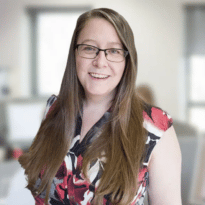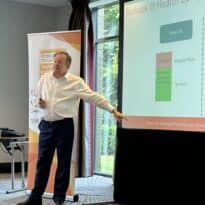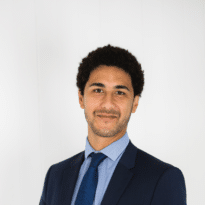Leaving paid employment to start out on your own and set up an outsourced paraplanner firm is a considerable step to take, as Alan Gow director of Argonaut Paraplanning can confirm. In fact, the name Argonaut reflects that, Alan says: “ I looked it up and one of the meanings was ‘a step into the unknown’, which is what it felt like at the time.”
That was in 2011. Alan started off working on his own but as many self-employed people soon find out, the idea that working for yourself will give you greater control over your working life and so your work/life balance, is soon eroded by the realities that you are now responsible for running the business as well as the day-to-day work which brings in the money.
“You quickly realise that you can only do so many things in a day. In effect you are doing two jobs – running the business, the marketing and invoicing and chasing late payments and so on, and then doing the technical reading and the work that is actually going to earn you the money. That is tough for any one person,” Alan says.
In addition, as a sole trader, one of the advantages of working in a team that he missed was the ability to bounce ideas off of other people. “I don’t think any one paraplanner knows everything and as much as you can look up reference information, there is a lot to be said for working in a more collaborative manner,” Alan says. Which is why now the Argonaut team is based together in the same office “so we can talk and discuss cases in some detail and sometimes pick up on seemingly small things that can really make a difference for the client,” he says.
Looking for a business partner
After 18 months of working alone Alan made the decision to seek a partner for the firm as part of a strategic plan to grow the business and also to give his adviser clients greater security around the stability and longevity of the firm.
It took longer than he had anticipated finding the right partner, but in July 2013 Argonaut merged with JW Paraplanning and its owner Julie Pipe became a co-director of Argonaut Paraplanning.
“Setting up on my own was a big step but so was joining forces with Julie because it meant neither of us was making all the decisions anymore, which inevitably means that at times we’ve had to compromise. Fortunately, Julie and I are a good fit, we complement each other in many ways and we work well as a management team.”
The firm also took on its first employees. That took owning a firm to another level, Alan says. “When you are on your own if the flow of work is irregular you can work with it but the bigger your team gets the more you need a steady stream of work for the company to be a able to function properly. It’s no longer just about you, now you have responsibility to other people who are relying on you to pay their salary so they can pay their mortgage etc.”
With that in mind, Alan and Julie have developed the firm’s business model in a way that supports long-term business relationships.
Alan explains: “We charge a retainer based on a proportion of expected work volumes so clients are essentially making a part payment in advance. We don’t work on an ad hoc basis. We only work with firms who see the value in using us on an ongoing basis, because it helps us to build a strong relationship with them. Working this way we get to know how the adviser really works and what they want and value and they get to know how we work, so we become integrated into their processes.
“It also means we know, as far as is possible, the volume of work coming in, which helps us plan and maintain service levels,” Alan adds.
Many of the firm’s clients have been with the firm now for three to four years and range from one-man-bands to smaller firms of up to 10 staff. “Some want us to do everything while others will undertake a degree of the work in-house and outsource the more complex reports, particularly in the multiple advice areas, to us,” Alan says.
With more advisory firms realising the considerable benefits that paraplanning can bring to their business, outsourced paraplanning business is booming, and Argonaut is now looking to expand. The difficulty for the firm is finding paraplanners with the right level of qualifications and experience. “Many people are great report writers but in our work we need more than that,” Alan explains. “There is a difference between a report writer and a paraplanner, which is that a paraplanner will have input into the advice process. In our work with our adviser clients we’ll discuss cases with them, and we’ll take the time to think around the case and where appropriate to offer up alternative ways of doing things, so that the final solution is the best the adviser can produce for the end client.”
Suitability reports
The bulk of Argonaut’s work is suitability report writing, alongside the associated research, including analyses of investment features, charges and performance.
Getting the reports right is incredibly important, Alan says and he and Julie have worked hard to develop a personalised report style that “tells a story”.
“Clients have to understand what they are reading and the best way to achieve that, we’ve found, is for the reports to follow a logical progression, to tell the story,” Alan says.
On the age old issue of how big a suitability report should be, that is down to the adviser client, Alan says. “The line between having too much in a report and not enough is a difficult one to draw and it is really down to the individual or firm. Our job is to give advisers something that fits with their brand, their company ethos and the way they work. Some firms, or their networks, want file information to be reiterated in the report, while others want something quite succinct.”
How suitability reports are tackled can vary enormously, Alan says. “I think some suitability reports lack sufficient personalisation. Report writing may be viewed by some as filling in blanks on a template but I don’t think that’s what suitability report writing should be about. You’ve got to really look at the client situation, their level of understanding, and the complexity of what they are doing and gauge it appropriately.
“For us, one of the key areas where we will add an awful lot of bespoke wording is at the start of the report, setting the scene so the client has a good picture of the adviser’s understanding of what’s being done and why.”
In terms of presentation and understanding, Alan recommends using pictures and diagrams “rather than long paragraphs and tables of numbers. Good use of colour within report can make it look more professional,” he says.
As with all things paraplanning, what’s important, he adds, is to always have the end client in mind, particularly when dealing with multiple advice areas. “This can be complex to cover properly and reports can be lengthy, so it is important that they are as easy as possible to navigate, the language used is simple to understand, and that each section is separate and distinct so that the client can find and understand what they need to in the report.
“The suitability report is one of the few tangible things a client can take away with them following a meeting with an adviser. They might have paid a fee of many thousands of pounds and the report needs to be something the adviser is proud to put in front of the client and really shows the client the value of the advice process.”
Typical week
Asked what a typical week holds for him, Alan says he rarely has one as such. “They seem to vary a lot. I start most weeks with the intention of getting down to some good honest paraplanning but other things seem to come along. For example, this morning we’ve had three new business enquiries and by the time you’ve talked through with a potential new client what your proposition is and what makes you different from other paraplanning firms, and recorded all the appropriate details afterwards, that can eat into your day.”
The inevitable stresses and strains of running a business aside, the joy of the job is the paraplanning, Alan says. “This job is always different. Every time you think you’ve done something another case will come along that is more complex or has a different twist to it, or that can have a couple of factors which can have a huge difference on the outcome. Paraplanning never gets dull,” he says.
Powwows and the Personal Finance Society
Alan is a keen supporter and organiser of the Paraplanner Powwows and is a member of the Personal Finance Society Paraplanner Practitioner Panel.
“When the Powwows started I wanted to be involved because it’s a fantastic idea. Also, I’d already been thinking about trying to get together a local group of paraplanners to talk about paraplanning, so from my perspective it was a well timed initiative.”
He is one of the organisers of the ‘Powow Down South’ events. “They are fun to do and it’s such a valuable way to spend your time. To sit down with some of the best paraplanners that I’ve met and talk through ways other people do things is such a great learning experience. People do get a lot out of those sessions and each time we get about a 50/50 split between new people and regular attendees,” he says.
Getting the message out about paraplanning was the key reason he became involved with the Personal Finance Society panel, he says. “The Society has the scale and the welly to get things done. They have such a large membership base and such a huge reach and promotional capability. They can organise events like the Purely Paraplanning conferences that took place all around the country, and importantly, the ability to be a major promoter of paraplanning as a career choice.
“Paraplanners are often isolated in that they are working alone without much interaction with other paraplanners. The Personal Finance Society can get in front of all these people and tell them what’s going on and invite them to join in.
“So both the Powwows and being part of the Personal Finance Society Paraplanner Practitioner Panel are important to me.”




























